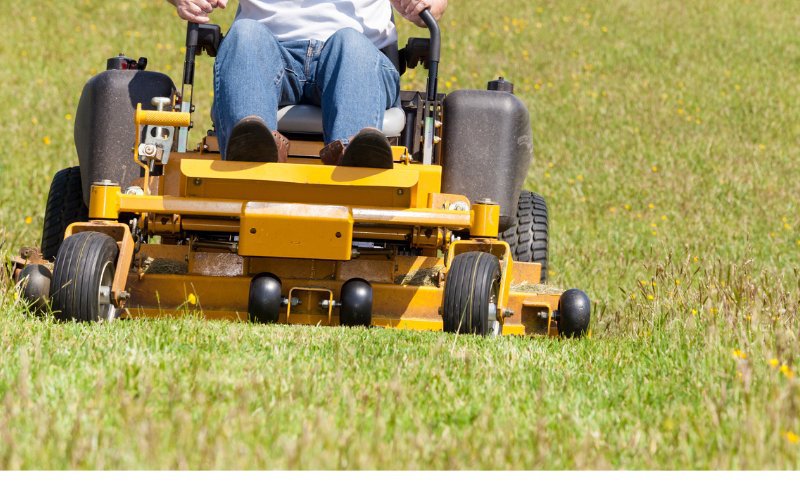Controlling a zero-turn lawn mower shouldn’t resemble a ride on a fairground bucking bronco on a Saturday. But, whether you’re new to the world of zero-turns or a seasoned veteran, jerky controls can be an issue. So, before you break something, it’s a good idea to figure out what’s going on. So, let’s check out why this could be happening and see if you can get the lurching under control.

Why Your Zero Turn Mower Steering is Jerky (The Short Answer)
The two most common reasons your zero-turn mower has jerky steering are either lack of experience with the specific control systems or oversensitive controls. Luckily, both of these problems can be addressed and overcome.
Zero Turn Mower with Jerky Control (2 Possible Reasons)
So, is it you or is it the zero-turn mower with jerky controls? Let’s look a little closer and find out.
Gauging Your Experience
Unless you’re a natural, if you’re new to zero-turn mowers, it’s going to be a rough first few rides. The first time I took the controls, I managed to flatten several bushes, clip a car, and leave countless holes dug in the lawn from the rear tires. Jerky would be an understatement.
I’ll be the first to admit it’s not as simple as it looks. So, how do you tell if it’s you or the mower? Well, I had a friend try out my mower to see how it performs. The response was, “it’s fine”.
Over Sensitive Control
For the veterans out there, experience shouldn’t be a problem. It’s more than likely the mower. In this case, systems such as the dampers are in place to reduce the jerky experience. These are usually in the form of hydraulic pistons connected between the handlebars and frame. But, like any part on a mower, these systems can fail and no longer function.
Test each handlebar by moving the bar back and forth. When doing this, look to see if the ends of the hydraulic piston, which are located under the seat, are securely fixed in place. If they are, then look to see if there is any resistance in the piston. If they are loose or there’s no resistance, you’ll know they need either fixing or replacing.
How to Fix Jerky Steering on a Zero-Turn
With these two common problems come two straightforward solutions. So let’s take a look at what you can do to solve them.
Improving Your Skill Level
Unfortunately, there isn’t a driving school for zero-turn mowers, so learning is going to take practice. I’d suggest taking the mower out around the yard just to practice driving; forget cutting for a minute.
Also, position your hands closer together and lift the armrests out of the way. This will give you a much better feel for what is going on. Getting in extra hours to simply practice driving your zero-turn is going to provide you with the experience you need to achieve the smooth skill you’re aiming for.
So, practice all the different actions the mower can do, such as forward, reverse, and turning. Start slow and pick up the pace as you gain experience. Make the most of the yard if you have a large section of it to practice on. It’s like riding a bike, no wheelie on the first day!
Adjusting the Dampers
So for you seasoned guys who have noticed the ride becoming jerky, you’ll need to check out the dampers. They could have come loose, or they could have failed. So let’s take a look.
Locate the Dampers
Most dampers on a zero-turn are going to be located under the seat. So first, lift the seat and let it rest on the bracing cable. Next, look for the hydraulic piston connected between the handlebar mechanism and the frame.
Tighten or Remove the Dampers
During your testing of the dampers, you determined whether they were loose or if they needed to be replaced. For a loose damper, grab a socket wrench and tighten up the bolt. If you need to replace the damper, remove both of the fixing bolts.
Replace the Dampers
With both of the bolts removed, lift the failed damper off the mower and replace it with the new damper. Next, install the two mounting bolts and tighten them securely. Once finished, you can repeat the process for the other damper.
Test Steering for Jerking
With the dampers replaced, you can now test the action of the handlebars. You will feel that there is a lot more resistance with the new hydraulic piston installed. This should solve the problem with your zero-turn mower having jerky controls.
Tools & Parts Required
- Socket Wrench Set
- New Hydraulic Piston Dampers


Leave a Reply